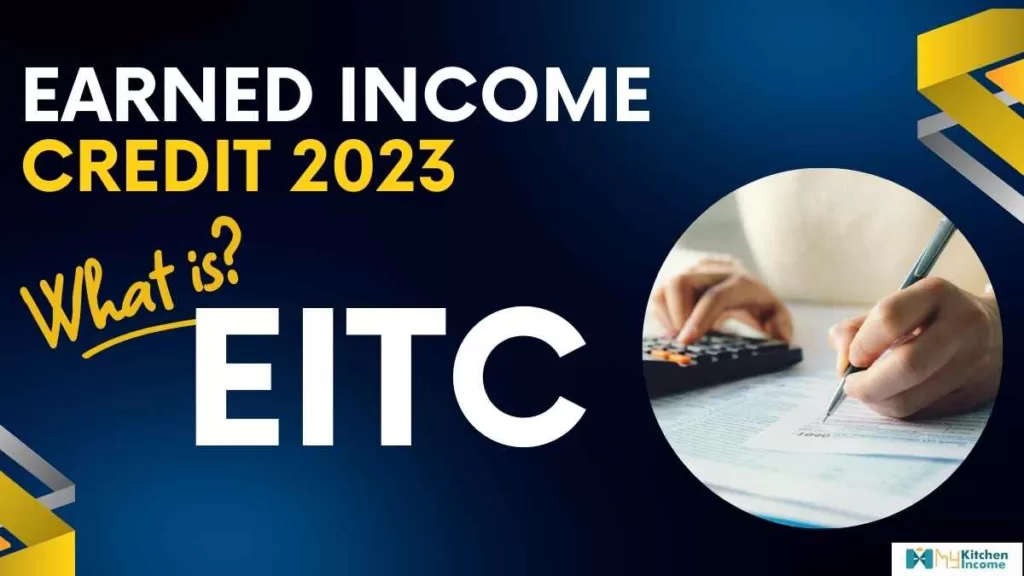Lets explore earned income credit 2023. The Earned Income Tax Credit (EITC) is a significant financial boost for millions of American workers each year. Designed as a refundable tax credit, the EITC helps low- to middle-income individuals and families reduce their tax burden and often results in a refund. As we delve into the intricacies of the EITC for the year 2023, it’s important to understand the eligibility criteria, credit amounts, and potential pitfalls to avoid when claiming this beneficial credit.
What is the Earned Income Tax Credit?
A Boon for Low- to Middle-Income Workers
The EITC is akin to a financial lifeline for those who work hard but earn modest wages. It’s a progressive tax credit that increases in size as a taxpayer’s earned income grows, up to a certain point, making it a powerful anti-poverty tool.
How the EITC Works
Unlike deductions that reduce taxable income, the EITC directly reduces the tax owed and can even result in a refund if the credit exceeds the taxpayer’s liability. This feature makes it especially valuable, as it can provide additional funds that can be used for essential expenses.
EITC Amounts and Limits for 2023
The Range of Credit
For 2023, the EITC amount a taxpayer can claim ranges from $600 to $7,430, depending on various factors such as income, filing status, and the number of qualifying children.
Qualifying for the EITC
To be eligible for the EITC, one must have at least $1 of earned income and meet other conditions. This ensures that the credit supports those who are actively working.
A Look at Investment Income
Investment income must be below $11,000 in 2023 to qualify for the EITC. This cap helps to ensure that the credit goes to those whose primary income comes from work rather than investments.
The Impact of Children on Your EITC
More Kids, More Credit
The number of qualifying children a taxpayer has significantly affects the EITC amount, with larger credits available to those supporting more children.
Meeting the Criteria
Each child must meet certain age, relationship, and residency requirements to be considered a qualifying child for EITC purposes.
Avoiding Errors with Your EITC Claim
The Consequences of Mistakes
Errors in EITC claims can lead to frustrating delays, repayment with interest, and even potential bans from future claims. It’s crucial to get it right the first time.
Fixing Past Mistakes
If you’ve realized that you were eligible for the EITC in the past but didn’t claim it, the IRS allows taxpayers to amend returns to claim the credit for the past three years.
EITC Amounts Detailed for 2023
Credit Breakdown by Number of Children
For 2023, the EITC amounts are broken down as follows: $600 for those with no children, $3,995 for one child, $6,604 for two children, and $7,430 for three or more children.
Income Limits for Claiming the EITC
AGI Thresholds Vary
Adjusted Gross Income (AGI) limits for the EITC in 2023 stand at $17,640 for single, head of household, or widowed filers without children, and $24,210 for those married filing jointly without children. These limits are higher for taxpayers with children.
EITC and Earned Income: What Counts?
Broad Scope of Eligible Earnings
The EITC is claimable on a variety of earned incomes, including wages, gig economy earnings, self-employment income, union strike benefits, certain disability benefits, and nontaxable combat pay.
The Direct Benefits of the EITC
Reducing Tax Owed and Providing Refunds
By reducing the tax owed dollar-for-dollar, the EITC can transform a tax bill into a refund, offering a helping hand to those who need it most.
Maximizing Your EITC: Tips and Strategies
Ensuring Eligibility
To maximize your EITC, it’s important to ensure that you meet all the qualifying criteria. This includes having a valid Social Security number and filing the correct tax return status.
Understanding the Income Thresholds
Be aware of the income thresholds that apply to your specific situation, as earning too much can disqualify you from receiving the credit.
Documenting Your Earned Income
Keep meticulous records of your earned income throughout the year. This documentation will be crucial when it comes time to file your taxes and claim the EITC.
Common Misconceptions About the EITC
It’s Only for Parents
One common misconception is that the EITC is only available to taxpayers with children. While the credit is larger for those with kids, childless workers can still claim a smaller credit.
You Can’t Get a Refund
Another myth is that you can’t receive a refund from the EITC if you don’t owe any tax. In fact, because the EITC is refundable, you can get money back even if your tax liability is zero.
How the EITC Benefits the Economy
Boosting Local Economies
The injection of EITC refunds into the economy can stimulate local businesses and services, as recipients often spend their refunds on everyday needs.
Encouraging Work and Reducing Poverty
By supplementing the income of low-wage workers, the EITC encourages work and helps lift families out of poverty, which can have long-term economic benefits.
Planning for the Future: The EITC in 2024
Looking Ahead
For 2024, the EITC will range from $632 to $7,830, providing even more support for eligible taxpayers.
Adapting to Changes
It’s important to stay informed about changes to the EITC and other tax credits, as these can affect your financial planning and tax strategy.
Conclusion: Earned Income Credit 2023
The Earned Income Tax Credit remains a vital component of the tax system, offering financial relief to those who need it most. By understanding the qualifications, amounts, and strategies for maximizing the credit, taxpayers can ensure they receive the full benefit they’re entitled to.
FAQs About the EITC
Q1: Can I claim the EITC if I have no children?
A1: Yes, you can claim a smaller EITC amount even if you don’t have children, provided you meet the other eligibility criteria.
Q2: What happens if I make an error on my EITC claim?
A2: Errors can lead to delays, repayment with interest, and potential bans from future claims. It’s important to double-check your information before filing.
Q3: How do I know if my child qualifies for the EITC?
A3: Your child must meet specific age, relationship, and residency requirements. You can find detailed criteria on the IRS website.
Q4: Can self-employed individuals claim the EITC?
A4: Yes, self-employed income is considered earned income and can qualify you for the EITC.
Q5: Does the EITC affect my eligibility for other government benefits?
A5: The EITC generally does not count as income for the purposes of determining eligibility for federal benefit programs.



